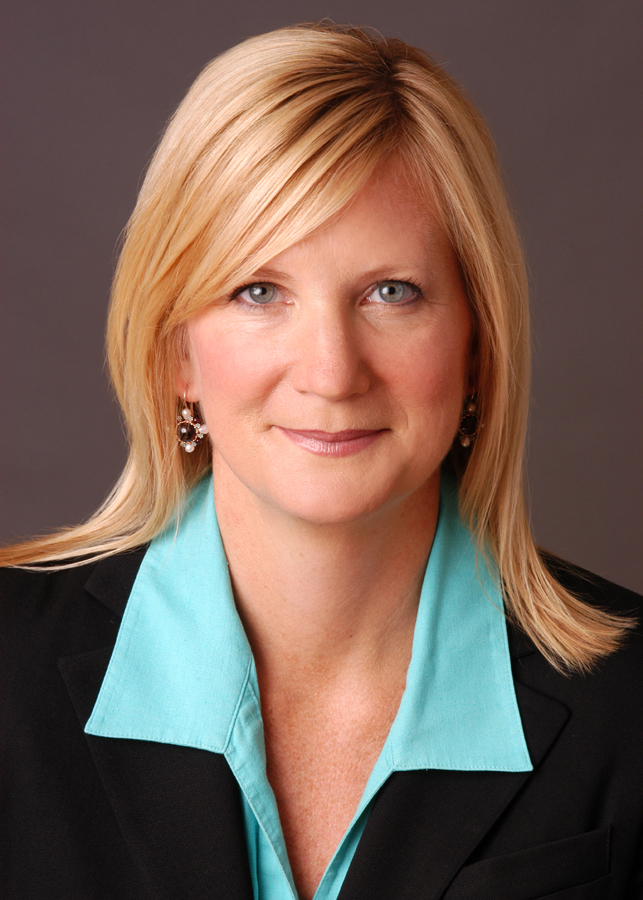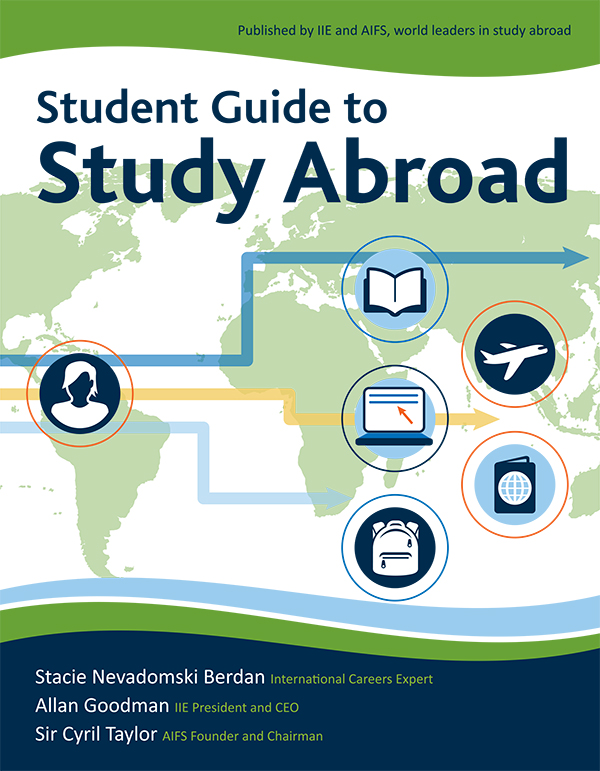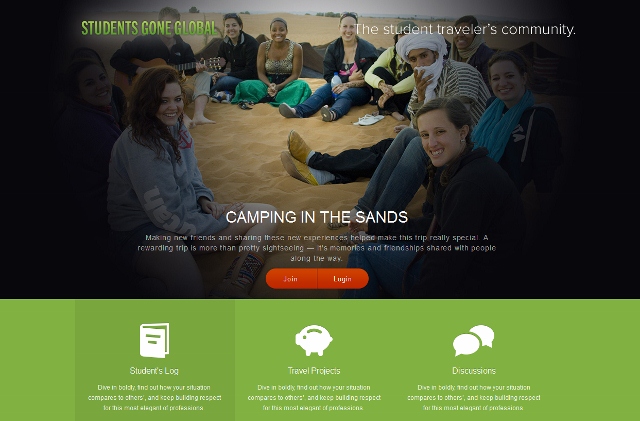Helping Syrian Scholars and Students
Posted on Sep 28, 2013

Originally appeared on Huffington Post.
One of the most lasting and destructive effects of war is the way it disrupts education. The ongoing crisis in Syria has had devastating effects on young people and the education sector.
Many universities have closed and many schools in Syria have been damaged or destroyed. Students have been unable to reach their classrooms because of the dangers en route, while others have been forced to leave their homes and communities to escape shelling. Many Syrian families have been displaced — both internally and externally — or are living in refugee camps, with limited access to basic education. Students have been targeted in retribution for their participation in protests, and the Syrian scholarly community faces chilling brutality. General violence has spilled over onto university campuses, with tragic bombings taking place at the University of Aleppo and the University of Damascus earlier this year. Campuses have been described as military zones.
But education is the best hope. It is the most effective weapon against war and conflict. Syria’s students, professors and researchers represent the country’s best chance to rebuild once the current violence subsides.
“As Syrian university labs and classrooms are being bombed, and students and professors killed, kidnapped and imprisoned, the international community has a singular chance to affect the future of the Syrian national academy and a moral imperative to do so.” — Institute of International Education (IIE) President Allan E. Goodman.
Goodman, who has been a leader in international education for decades, is a man of his word. Yesterday at the 2013 Clinton Global Initiative (CGI) Annual Meeting, IIE announced that it would be expanding its CGI Commitment to Action to join forces with the Global Platform for Syrian Students and other global partners to help Syrian students continue their education and scholars their academic work. The global group of partners committed a total of $3 million with a goal of raising another $4 million in university commitments and funds from public and private sources.
Assistance to Syrian students and scholars in the academic year 2013-2014 includes 600 Syrian student scholarships: 200 in Lebanon, Turkey and Iraq; 100 in other countries of the MENA region; 100 in North America; 100 in Portugal and other EU countries; 100 in Brazil and other Latin American countries. In addition, 15 fellowships for Syrian scholars will be provided through IIE’s Scholar Rescue Fund, and hundreds of online test preparation courses (for SAT, GMAT and GRE) will be offered for free.
Swift action taken by IIE and its partners in the past year has helped many students already. The $3.8 million raised last year by the consortium — IIE, Illinois Institute of Technology, Jusoor (an organization dedicated to economic development in Syria) and the U.S. Department of State — provided assistance to approximately 100 Syrian students and scholars. An additional $2.3 million in full and partial scholarships were awarded by 13 universities. The Illinois Institute of Technology (IIT) has provided scholarships for and hosted 34 Syrian students to date, the largest number by far, followed by Monmouth College in Illinois, which has awarded 13 scholarships.
Now in its second year, the consortium is expanding its partnerships to assist more Syrian students around the world — with the Global Platform for Syrian Students, Kaplan Test Prep International, University of California, Davis Human Rights Initiative and Princess Basmah Bint Al Saud’s Global United Lanterns — and building on last year’s CGI commitment.
But it’s not just the global partners and universities: The scholars and students are giving back too. At IIT, Syrian students are doing their part to raise awareness of Syria, creating an on-campus club inviting Syrian and non-Syrian students to join and learn that, “the Syrian culture is much more than war and death. We have a rich culture and beautiful heritage,” according to the president of the Syrian Club at IIT. The students have started teaching Arabic on campus, filling a need for many interested students who want to learn the language, but also helping fellow students cross the cultural divide by demystifying the language. And scholars across the country are furthering their academic work so that, when the time comes, they can return to Syria and start rebuilding.
Although many people on both sides of the political aisle don’t think we should get involved militarily, this global initiative — designed to preserve the intellectual capital of Syria — should be one that everyone can agree on.
A Student Guide to Study Abroad to be Released!
Posted on May 28, 2013

At the NAFSA conference this week in St. Louis, Student Guide to Study Abroad is being released for pre-sale. This handy guide is my latest book, a collaboration with IIE and AIFS designed to combine the best thinking on study abroad today. Every student who wants to succeed in the global economy should study abroad. And every student who is considering studying abroad should read this book! Packed with practical “how to” information offered in a fun and engaging style, this valuable hands-on resource includes 100 easy-to-follow tips and dozens of real-life stories. Each chapter features useful quotes and anecdotes from a diverse collection of students, advisers and professionals from across the country.
Studying abroad should be part of every student’s college education.
Student Guide to Study Abroad is a must-have for college students and their parents. In it we offer comprehensive advice on the entire process:
- Before you go: Doing the research to choose the right program, figure out the financials, and prepare properly for your big adventure abroad
- While abroad: Making the most of your time abroad by understanding and dealing with culture shock, exploring the benefits of cultural immersion, and staying safe and healthy while having fun
- When you return: Transitioning back to life in the States by learning to adapt, networking with like-minded global souls, and using study abroad to showcase your global growth and learning
Student Guide to Study Abroad arms students with the critical information needed to make one of the most important decisions of your college career.
My coauthors are Dr. Allan E. Goodman, the President and CEO of the Institute of International Education (IIE), the leading not-for-profit organization in the field of international educational exchange and development training, and Sir Cyril Taylor, the Founder and Chairman of the American Institute For Foreign Study (AIFS), which organizes study abroad and cultural exchange programs for more than 50,000 participants each year.
Pre-order your copy today!
Teacher Treks Inspire Learning thru Global Travel
Posted on Feb 13, 2013
Originally published on Huffington Post.
Today’s teachers are preparing future employees, helping to create future business leaders, scientists, diplomats, entrepreneurs and artists. They are members of our community, parents of our children’s friends and important role models in the lives of our children. In my research on developing a global mindset, I have found that a teacher’s desire to model open-minded, curious behavior and demonstrate a desire to explore the world can help a child enormously in becoming globally aware. I’ve spoken to hundreds of successful internationalists who attribute their international interest to a teacher who inspired them with a map, intrigued them with a history lesson, encouraged them to study another language, or captivated them with stories from a trip they’d taken. Moreover, teachers play an important role in spreading tolerance and understanding of other cultures and can have a profound impact on their students’ lives.
But most teachers do not have the means to travel. Based on a recent survey of 1,000 K-12 teachers by Hilton HHonors, most teachers don’t get to travel or experience the world they educate their students about:
• Half travel less than once or twice a year
• 93% believe that travel provides cultural education that can’t fully be taught in a classroom
• 85% believe they should travel more
• 79% believe their students would benefit from hearing about their travels
• 92% cited finances as the main reason they don’t travel more
But now, thanks to a creative partnership between the Institute of International Education (IIE), one of the world’s largest international education leaders, and Hilton HHonors, the loyalty program of Hilton Worldwide, they now have a new resource, Teacher Treks Travel Grant Competition. Teacher Treks will fund 15 K-12 teachers to experience first-hand content relevant to the subject they teach, enriching their curriculum and inspiring students to explore the world. It’s important to note that all subjects can be taught through a global lens. Whether analyzing a historic work of art, such as Leonardo da Vinci’s Mona Lisa after seeing it up-close in the Louvre in Paris, or telling a riveting tale of the ancient civilization of Machu Picchu after exploring the ruins in Peru, teachers can bring a little bit more of the world – and their excitement and passion for their experience – into the classroom.
“Getting children outside of the classroom is so important. In my experience as a teacher, those out of class experiences really make a difference and create memories that will stick far beyond just reading a book,” says Perea Blackmon, 2012 Washington, D.C. Teacher of the Year. She adds, “The same goes for teachers – they need to get outside of the classroom and learn, which is why I’m so happy to have teamed up with Hilton HHonors for the launch of Teacher Treks, an award program that will grant 15 winners the cultural excursion of a lifetime. It benefits the teachers, the classrooms and students – it opens the eyes of children to the endless possibilities of what they can discover and learn through travel.”
Here’s how it works. K-12 teachers from across the US and Puerto Rico are invited to apply online. They are required to submit two essays between 300 and 600 words detailing their proposed global adventure and their plan for sharing their experiences with students and colleagues; a 140-character entry summary, telling voters why they should win; a letter of recommendation from their school’s principal; and a photo. The application deadline is March 15, 2013. Information and the application can be found online at the Hilton HHonors Teacher Treks site.
Thirty finalists will be selected of whom 15 will receive a trip valued at $6,000 to travel to their desired destination. In addition to the trip, each winning teacher’s school will receive a $2,500 grant to use for cultural activities or enhancements. The 15 runners-up will each receive a $2,500 grant for their school. In addition, one winner from all submissions will receive a cultural excursion for their classroom valued at $1,500.
This creative partnership satisfies a need. Through Teacher Treks, Hilton HHonors hopes to grant more teachers the opportunity to experience the world they teach first-hand, as well as foster a love of travel and the rich cross-cultural experiences that come with it. In IIE, it found a partner that has the expertise and knowledge to create, maintain and administer a program that can make a difference in the lives of 15 teachers multiplied by the number of students these teachers touch.
I think this program has the potential to be terrific – one more innovative way to help our young people prepare for an interconnected global world. I’m glad to see a global company getting involved; we need their voices to join us. I passionately believe that a global mindset is as critical to the long-term economic success of the United States as it is to other nations. And while the debate continues on whether we need global education or not, technology continues to create a borderless global economy. The fences, check points and borders of yesteryear are increasingly irrelevant to the way trade, cultural and scientific exchanges proceed, and our students need to understand how to operate in this new world marketplace. Our teachers’ abilities to teach today’s students how to understand and deal with the world will have a direct impact on economic and political security tomorrow. Changes are happening much faster than we realize, and so we must change the way we adapt to the world to keep up, let alone get ahead, to ensure success.
Teacher Treks is one more step in the right direction. Bravo to IIE and Hilton HHonors for recognizing the importance of travel and cross-cultural experiences as a critical teaching contribution.
I know quite a few teachers with whom I’ll share this information. I hope you’ll do the same.
Women Helping Women
Posted on Jan 16, 2013

Coauthored with Professor Liesl Riddle, the original article appeared in several publications including AsiaPathways, South China Morning Post, Huffington Post and China Daily.
In the next 50 years, most economic growth worldwide will take place outside the G7
But that’s only half the story. Who are the people who will be the driving force for this growth? Many will be women. But too seldom conversations about economic growth turn a blind eye to gender issues, despite the fact that women comprise more than half of the global economy, 40% of the global workforce (Commonwealth Workforce Council), and $20+ trillion in financial spending worldwide (International Finance Corporation 2011). Women have a multiplier effect as consumers, building markets as they make the majority of purchase decisions in households, often making purchase decisions to increase family welfare. The question is not whether women will contribute to the future global economy but by how much – and where.
And therein lies the rub. Despite gender equality’s being hailed as smart economics and necessary to realize an organization’s full potential, empowering women has been slow to catch on, especially in certain regions of the world like Asia. This is particularly striking, given the important role women play in Asian economies in key manufacturing and service sectors, such as textiles and apparel and back-office processing and call centers. Because of both financial and social benefits of lending to women, most micro-lending institutions aim the vast majority of their lending portfolio toward female borrowers. Female migrants – almost half of the world’s migrant population – also contribute substantially to Asian economies by sending remittances back home.
Yet gender inequality is still pervasive in the region. Many women across Asia still lack access to basic education, are left out of policy decisions affecting their families, and struggle to advance in their jobs. Women face significant challenges in starting a business and are often left behind as businesses internationalize.
In Hong Kong, women are well represented in the civil service, at university and within the workforce, and they generally have more opportunities than their counterparts in many other countries in the region. But even in Hong Kong where East meets West, gender disparity exists. This fact is surprising, given the SAR’s unique combination of British colonial rule and ties to mainland China, where Communism formally embraced gender equality more than 50 years ago. Even though gender equality is protected by the legal system, Hong Kong remains a traditional society, where conservative gender stereotyping is common. This affects who cares for the children, the elderly and the other traditional “homemaker” roles. Despite the comparative ease of childcare due to close-knit family structures and domestic help from the Philippines and Indonesia, women with children bear greater responsibility. Similar to the United States, greater advocacy is needed in Hong Kong by men and women in leadership roles to improve work-related issues that will keep more women in the workforce, such as flexible hours and maternity leave.
While many of Asia’s economies are booming, few women possess a seat at the decision-making table in politics or the economy. Although some women have risen to positions of political leadership in the region and may have served as role models, few have actively promoted women’s empowerment and issues. In terms of the economy, nearly half of boards across Asia still lack a single, independent woman director (Korn Ferry Institute 2011).
Yet women in Asia have been gaining steadily on the Forbes’ “100 Most Powerful Women” list, rising from eight in 2010 to eighteen in 2012. Of those listed, four were from China, three from India, three from Australia, two from Singapore, and one each from Hong Kong, Indonesia, Myanmar, New Zealand, Taiwan and Thailand. Although there are many cultural factors that have to be considered within each country, the rise of women on this list is a sign of progress because it means that: a) a transformation is taking place; b) women in leadership roles can advocate for additional change; and c) women can build on success by mentoring each other along the way.
In mainland China, opportunities for women are growing rapidly says Rebecca Weiner, co-founder and Director for China Services of Strebesana Resources, a consulting and brokerage firm in the medical optics trade. “We are seeing tremendous growth for women in medicine in China today – doctors, hospital directors, medical educators and executives in companies in the medical field. In our business, providing small-bore optics to support minimally invasive surgery, we are also seeing a boom in focus on women’s health issues.”
Who better to help women than other women? Women understand that balancing work with the traditional female roles of child care and managing the home is a constant struggle for women around the world. And they can help guide and support each other to navigate these challenges in the future global economy.
A great example of this mentoring has been taking place at Dupont Japan (25 percent female), which has had a Women’s Network for the last eight years. The Women’s Network recently started an initiative specifically designed to help younger women reach higher levels within the company. Diane Gulyas, President – DuPont Performance Polymers, was in Japan recently and met with the core team of Japanese women who have worked at Dupont for more than 25 years in mid-level jobs, “It was inspiring to listen to Dupont veterans reflect on what it would take to reach the top jobs as they mentored young college graduates.” She added, “Although Japan is very different today than it was even 10 years ago, women have a lot to offer other women on how to succeed in the workplace.”
Often success is dependent on access to excellent childcare at affordable rates, one of the biggest barriers in a country like Japan. But what about the social expectations in other countries, such as India, which have not kept pace with increased career expectations of women? A study last year (Nielson 2011) found that India has the highest percentage of stressed women at 87% (Mexico is second at 74% and U.S. at 53%). Can women help other women in this capacity? Yes, but it’s going to take a cultural shift in both women and men adapting to a new world order that reflects working women as critical to continued economic prosperity.
Women can share stories of how they’ve used micro-finance loans to start businesses and help not only themselves, but to pull their families out of poverty. Women can work together to push for change in increasing educations for girls, a critical step in empowering the next generation of women resulting in greater economic development. But it will take time and some extra help.
“As small- and mid-size companies across Asia explode onto the global stage, they’ll need to invest more in and address those issues of importance to women so that more women can fully participate in next-generation global leadership,” says Ken Belanger, Global Business Leader for TMC. “Many times this requires changes in an organization’s cultural context for women’s leadership initiatives.”
Such cultural shifts can happen. And although they’re specific by country and culture, we’d argue that the feminine culture of communication, sharing and advising other women is a strong indicator that women will help other women all the way to the top. But women will do it in their own way and at their own pace.
GWSB and IWF Partner to Place More Women On the Board
Posted on Jan 2, 2013

This blog originally appeared on Huffington Post.
Companies need more women on corporate boards. Women make up the vast majority of global consumers; they lead with a different style. They tend to be more risk-averse and raise the important issue of diversity within corporate boards. Women’s issues are global issues: education, childcare, healthcare, nutrition and human rights abuses.
Yet one of the biggest obstacles blocking the ascent of many women is an outdated perception that a narrow list of credentials is critical to being a good board member. Historically, these credentials have been those that men, as they have risen to the tops of organizations, have acquired throughout their careers, including line or management responsibility, regulatory compliance, financial leadership and a robust network of, usually, like-minded men. Most of us recognize that corporate boards must broaden their understanding of who makes a good board candidate, and that includes a wide range of experiences and perspectives sitting around the board table. But old habits die hard.
Many of us talk and write about this problem. And it is a problem when corporate boards are comprised of only 16% of women, a severely disproportionate representation of women who represent 40% of the workforce and 85% of the buying power. One leading university is finally taking action and doing something about it.
The George Washington School of Business (GWSB) and the International Women’s Forum (IWF) have collaborated to create a unique program designed to prepare, promote and place women on corporate boards: On the Board: Advancing Women’s Corporate Board Leadership. The program intends to put more women on corporate boards by training and equipping women leaders with the skills to become successful candidates.
GWSB has come up with a program that offers women advanced training in board-level leadership knowledge and practice, including corporate strategy, crisis management, ethical and responsible decision-making, corporate finance and value creation, risk assessment, leadership communications and regulatory compliance. Women in the program will have a group of mentors consisting of GWSB and other elite U.S. and international university faculty, leading practitioners, including sitting board members and directors, and voices from the IWF network. These already savvy business leaders will emerge as even stronger leaders in today’s global world.
So who are these lucky women chosen for the inaugural class? On the Board recently announced its first 15 Fellows, selected from a highly competitive, qualified, and overwhelming number of applicants: Caryl Athanasiu, Executive Vice President, Chief Operational Risk Officer, Wells Fargo & Company; Shelley Bird, Executive Vice President of Public Affairs, Cardinal Health; Barbara Byrne, Vice Chairman, Investment Banking Division, Barclays; Lauri Fitz-Pegado, Partner, the Livingston Group; Laura Hwang, President, Singapore Council of Women’s Organizations; Deborah Lentz, Senior Vice President, Customer Service & Logistics, Kraft Foods; Isabel Linares, Senior Counselor, PricewaterhouseCoopers (PwC Spain); Penny McIntyre, President, Newell Consumer Group; Gail McKee, Chief Human Resources Officer, Towers Watson; Nancy Philippart, Executive in Residence, Engineering Ventures Program, Wayne State University; Shoba Purushothaman, Founder, Training Ventures; Sandra Sanchez y Oldenhage, President and CEO, Amgen Mexico; Anita M. Sands, Group Managing Director and Head of Change Leadership, UBS Wealth Management Americas; Carrie Schwab-Pomerantz, President, Charles Schwab Foundation, Senior Vice President, Charles Schwab & Co., Inc.; Sandra M. Stash, Global Senior Vice President for Health, Safety, Security, Environment, and Operational Assurance, Talisman Energy.
Ultimately, On the Board‘s goal is to place all 15 of these clearly highly-qualified women on boards and to continue doing so with each group of participants year after year, directly increasing the overall percentage of women on corporate boards. But On the Board’s aspirations don’t stop there; they plan to serve as a sort of watch dog group for women by advocating for and monitoring the numbers of women on boards. On the Board plans to hold companies accountable through research and measurement for the severe disparities of gender in high business positions.
“On the Board will most certainly change business by having an almost immediate impact on the gender balance of corporate boards,” said Doug Guthrie, dean of GWSB. “And by changing business at the very top level, and pulling it into the 21st century, we will also affect change in the larger business environment and society overall.”
These 15 women are only the start of a strong initiative toward addressing the issue of gender on corporate boards. As On the Board attracts more attention with its efforts, I hope the discussion of women on corporate boards will garner more attention, too, leading to more action-oriented programs that advocate for women. It’s not just a numbers game. Diverse thinking is required to take companies forward today. I think GWSB and IWF are on the right track to making a big difference not only for women, but the success of the companies that welcome them to their boards.
Prometheus Sequel
Posted on Dec 29, 2012 Leave a Comment
Lorem ipsum sample link dolor sit amet, consectetur adipiscing elit. Sed cursus, nulla a egestas tristique, libero leo sodales sapien, vel luctus libero nisi vel nibh. Suspendisse ultrices, leo quis dignissim rutrum, nibh arcu vestibulum velit, eget vehicula sem felis in ante. Donec condimentum sem nec libero accumsan sed accumsan odio luctus. Curabitur ac vehicula quam. Sed tincidunt, enim sed sollicitudin cursus, elit massa facilisis ligula, eget aliquam lectus libero sed orci. Cras non nisl vel neque egestas euismod. Quisque consequat dapibus consectetur.
Maecenas lacus lectus, tincidunt vitae tristique eu, euismod in quam. Praesent euismod suscipit dui, eu ultrices sapien cursus in. Ut in leo ut elit congue mattis. Quisque sagittis, nibh quis scelerisque dictum, eros diam tincidunt urna, id varius lorem libero quis lorem. In cursus justo nec enim convallis et aliquet mi accumsan. Aliquam ultrices blandit lacus, sed dictum felis rhoncus lacinia. Integer vel nunc in ante condimentum mollis eu non nisl. Quisque blandit aliquam ligula, ac ultrices urna auctor in. Vestibulum laoreet, lorem in sodales rhoncus, massa metus mattis odio, sed volutpat massa nibh eget mi.
This is an example blockquote. Vestibulum id ligula porta felis euismod semper. Aenean laoreet hendrerit velit nec tempus.
Nam metus orci, volutpat quis dapibus in, bibendum vitae nisl. Donec rutrum justo in quam tempor nec varius metus malesuada. Vivamus vitae tellus ut nulla fringilla dapibus at sit amet sem. Etiam posuere ante sit amet dolor pretium eget fringilla dui aliquam. Aliquam gravida lectus iaculis neque rhoncus nec condimentum justo blandit. Maecenas quis ultricies nibh. Aenean laoreet hendrerit velit nec tempus. Nullam leo metus, lacinia sit amet euismod sed, ultrices at orci. Maecenas sit amet porta lacus. Integer blandit lobortis iaculis. Proin sed ipsum lacus. Etiam sed lectus eu lorem iaculis tristique. Phasellus nisi dui, vulputate posuere dignissim mollis, accumsan in ipsum. Donec a mi ut nisl varius mollis.
Heading 1
Heading 2
Heading 3
Heading 4
Heading 5
Heading 6
Donec sed lacus massa. Nam ligula augue, accumsan sed mattis eget, pharetra in dolor. Vivamus sollicitudin rhoncus orci, aliquam accumsan leo semper in. Morbi aliquam interdum velit ut mollis. Class aptent taciti sociosqu ad litora torquent per conubia nostra, per inceptos himenaeos. Duis dapibus rutrum lacus, in semper sem porttitor a. Nulla facilisi. Etiam sit amet purus eget arcu volutpat sagittis id vitae magna.
Cras a felis pharetra lectus posuere suscipit. Sed sed nibh ut enim vehicula egestas. Fusce porta ultrices orci nec malesuada. Pellentesque imperdiet mauris eget dolor mattis viverra et vitae leo. Aliquam nunc metus, dignissim quis posuere eu, consectetur sit amet elit. Cras venenatis libero ac nunc rutrum eu laoreet libero ullamcorper. Pellentesque convallis odio ac orci ultrices ac viverra ante bibendum. Vivamus erat magna, imperdiet id congue nec, dictum ut nisi. Nullam consequat risus a libero sagittis quis pulvinar nulla lacinia. Curabitur sollicitudin, nunc ac vehicula consectetur, diam enim faucibus mi, non lacinia lacus risus sit amet lacus. Duis non varius arcu. Curabitur pellentesque purus non ligula dignissim sollicitudin.
Duis mi magna, ultrices luctus congue a, porttitor eget turpis. Proin dictum consectetur consequat. Fusce condimentum nisi accumsan erat elementum adipiscing scelerisque ligula elementum. Duis sed porta nisi. Class aptent taciti sociosqu ad litora torquent per conubia nostra, per inceptos himenaeos. In id odio nec dolor rhoncus malesuada vel aliquet ante. Nulla tempor lobortis ipsum. Sed lobortis, ligula sit amet mattis commodo, dui turpis pharetra tellus, at aliquet massa mi id nisi. Ut gravida ante ac nisi lobortis ultrices. Quisque quis nulla leo. Etiam egestas ornare augue ac euismod. Pellentesque blandit felis sed risus laoreet vitae cursus diam porta. Vestibulum vitae condimentum orci. Mauris sit amet elit non enim dignissim venenatis. Phasellus pulvinar rutrum ante, sit amet gravida nulla commodo in. Etiam a sem quam, a placerat elit.
Kahuna Host
Posted on Dec 23, 2012 Leave a Comment

Lorem ipsum sample link dolor sit amet, consectetur adipiscing elit. Sed cursus, nulla a egestas tristique, libero leo sodales sapien, vel luctus libero nisi vel nibh. Suspendisse ultrices, leo quis dignissim rutrum, nibh arcu vestibulum velit, eget vehicula sem felis in ante. Donec condimentum sem nec libero accumsan sed accumsan odio luctus. Curabitur ac vehicula quam. Sed tincidunt, enim sed sollicitudin cursus, elit massa facilisis ligula, eget aliquam lectus libero sed orci. Cras non nisl vel neque egestas euismod. Quisque consequat dapibus consectetur.
Maecenas lacus lectus, tincidunt vitae tristique eu, euismod in quam. Praesent euismod suscipit dui, eu ultrices sapien cursus in. Ut in leo ut elit congue mattis. Quisque sagittis, nibh quis scelerisque dictum, eros diam tincidunt urna, id varius lorem libero quis lorem. In cursus justo nec enim convallis et aliquet mi accumsan. Aliquam ultrices blandit lacus, sed dictum felis rhoncus lacinia. Integer vel nunc in ante condimentum mollis eu non nisl. Quisque blandit aliquam ligula, ac ultrices urna auctor in. Vestibulum laoreet, lorem in sodales rhoncus, massa metus mattis odio, sed volutpat massa nibh eget mi.
This is an example blockquote. Vestibulum id ligula porta felis euismod semper. Aenean laoreet hendrerit velit nec tempus.
Nam metus orci, volutpat quis dapibus in, bibendum vitae nisl. Donec rutrum justo in quam tempor nec varius metus malesuada. Vivamus vitae tellus ut nulla fringilla dapibus at sit amet sem. Etiam posuere ante sit amet dolor pretium eget fringilla dui aliquam. Aliquam gravida lectus iaculis neque rhoncus nec condimentum justo blandit. Maecenas quis ultricies nibh. Aenean laoreet hendrerit velit nec tempus. Nullam leo metus, lacinia sit amet euismod sed, ultrices at orci. Maecenas sit amet porta lacus. Integer blandit lobortis iaculis. Proin sed ipsum lacus. Etiam sed lectus eu lorem iaculis tristique. Phasellus nisi dui, vulputate posuere dignissim mollis, accumsan in ipsum. Donec a mi ut nisl varius mollis.
Heading 1
Heading 2
Heading 3
Heading 4
Heading 5
Heading 6
Donec sed lacus massa. Nam ligula augue, accumsan sed mattis eget, pharetra in dolor. Vivamus sollicitudin rhoncus orci, aliquam accumsan leo semper in. Morbi aliquam interdum velit ut mollis. Class aptent taciti sociosqu ad litora torquent per conubia nostra, per inceptos himenaeos. Duis dapibus rutrum lacus, in semper sem porttitor a. Nulla facilisi. Etiam sit amet purus eget arcu volutpat sagittis id vitae magna.
Cras a felis pharetra lectus posuere suscipit. Sed sed nibh ut enim vehicula egestas. Fusce porta ultrices orci nec malesuada. Pellentesque imperdiet mauris eget dolor mattis viverra et vitae leo. Aliquam nunc metus, dignissim quis posuere eu, consectetur sit amet elit. Cras venenatis libero ac nunc rutrum eu laoreet libero ullamcorper. Pellentesque convallis odio ac orci ultrices ac viverra ante bibendum. Vivamus erat magna, imperdiet id congue nec, dictum ut nisi. Nullam consequat risus a libero sagittis quis pulvinar nulla lacinia. Curabitur sollicitudin, nunc ac vehicula consectetur, diam enim faucibus mi, non lacinia lacus risus sit amet lacus. Duis non varius arcu. Curabitur pellentesque purus non ligula dignissim sollicitudin.
Duis mi magna, ultrices luctus congue a, porttitor eget turpis. Proin dictum consectetur consequat. Fusce condimentum nisi accumsan erat elementum adipiscing scelerisque ligula elementum. Duis sed porta nisi. Class aptent taciti sociosqu ad litora torquent per conubia nostra, per inceptos himenaeos. In id odio nec dolor rhoncus malesuada vel aliquet ante. Nulla tempor lobortis ipsum. Sed lobortis, ligula sit amet mattis commodo, dui turpis pharetra tellus, at aliquet massa mi id nisi. Ut gravida ante ac nisi lobortis ultrices. Quisque quis nulla leo. Etiam egestas ornare augue ac euismod. Pellentesque blandit felis sed risus laoreet vitae cursus diam porta. Vestibulum vitae condimentum orci. Mauris sit amet elit non enim dignissim venenatis. Phasellus pulvinar rutrum ante, sit amet gravida nulla commodo in. Etiam a sem quam, a placerat elit.
Former Student Launches Website for Students Studying Abroad
Posted on Dec 12, 2012 1 Comment

Michael Flatt is the co-founder of StudentsGoneGlobal.com, the new social blogging community for student travelers. He studied abroad in London in 2009 at London Metropolitan University.
The old stereotype about Americans is we are generally oblivious to what goes on in the rest of the world. When you live in a nation as vast and isolated as the United States, it can be very difficult for citizens to conceptualize the cultural, social, and philosophical differences of countries abroad. However, studying abroad affords one the opportunity to live in a foreign city for an extended period of time and break out of his or her protective home shell. I was fortunate enough to be able to study abroad in London, England during the spring semester of 2009.
As an American study abroad student in London, I found myself in a unique situation because of the extensive historical past shared between the American and British people. The United Kingdom is the homeland for many Americans, which lends to a natural bond between the two countries that even Winston Churchill noted in his famous “Sinews of Peace” speech. I can now look back on my study abroad experience and wholeheartedly agree with Churchill’s sentiment. Throughout my time in London, I enjoyed immersing myself in the royalty and tradition that defines British culture while interacting with other students who were just as interested in learning about American society.
Although studying abroad does not impact each student equally, you can bet it will improve your ability to communicate with people of other cultures as well as change your perception of the rest of the world. My semester abroad taught me two very important life lessons, in particular. One, as a study abroad student you have a tremendous amount of responsibility to represent your home country in a positive manner. For example, most of the friends I made in London had previously never interacted with an American on a regular basis. With this in mind, I was always conscientious of how I was acting around others because I knew my actions would influence their view of Americans. For those of you who have not yet gone abroad, you will learn this is no easy task! Second, I learned that when you converse with someone from a different country on a regular basis, you begin to break away from your own pre-conceived beliefs and realize that most people have the same basic needs – they just meet them in very different ways.
After my semester abroad concluded, I was compelled to share my experience with other students who were going abroad in the future. As a result, I created AbroadinLondon.net as a resource to alleviate some of the initial anxiety future London study abroad students may face and as a way for me to document my unforgettable memories from abroad.
Although the Abroad in London website proved successful in its intention, I remained unsatisfied with the current state of the student travel industry. One often overlooked item is that living in a foreign country for an extended period of time is an intimidating experience! Before I went abroad, I had very little information at my disposal about the idiosyncrasies of student and university life in London. The research on the internet was overwhelming and filled with propaganda by various programs. On top of that, I didn’t know any other students studying in London. This made my actual study abroad semester much more difficult than it needed to be.
Because of this massive information problem, I recently co-founded StudentsGoneGlobal.com, a new online community for study abroad and youth travelers. Students Gone Global makes it easy for students to find useful first-hand travel information from their peers abroad, as well as interact with people who study in the same destination, or in places they are interested in traveling to in the future. 
Students Gone Global is 100% free to use for all student and youth travelers, so help us inspire students to travel the world by joining our community before your next trip abroad.
My initial interest in studying abroad came from my first international experience in the summer of 2006 after high school graduation. My Dad, whose job consists of traveling overseas on nearly a monthly basis, treated me to a two week vacation to England, France, and Belgium. For two weeks, I was able to see the Westminster Abbey and the Parliament in London, tour the Normandy region of France, visit the Louvre and Eiffel Tower in Paris, and even eat a Belgium waffle in Brussels. I will never forget those two weeks of traveling and I encourage you all to find a way to go abroad and have similar life-changing experiences!
Feel free to connect with Michael on Twitter or via email at mflatt@studentsgoneglobal.com.
International Education Exchanges are at All-time High but We have More Work To Do
Posted on Nov 20, 2012 1 Comment

The Open Doors Report on International Educational Exchange (IIE) recently released, reports a one percent increase in the number of U.S. students studying abroad at – a record high of 273,996 in the 2010/11 academic year. Published annually by the Institute of International Education — with funding from the U.S. Department of State’s Bureau of Educational and Cultural Affairs — the report shows that 764,495 international students studied at colleges and universities in the United States, an increase of six percent and an all-time high.
U.S. students studying abroad increased in 17 of the top 25 destination countries. Five percent more students studied in China and 12 percent more students studied in India than in the prior year. Open Doors 2012 reports that the United Kingdom remains the leading destination for American students, followed by Italy, Spain, France and China—which remained the fifth largest host destination for the fifth year. There were significant increases in the number of Americans studying in several non-traditional destinations outside Europe: Brazil, China, Costa Rica, India and South Korea.
Study abroad by American students has more than tripled over the past two decades, and Open Doors reported a steady rise in U.S. study abroad over several decades. However, American students studying abroad still represent a small proportion of total enrollment in U.S. higher education. About 14 percent of American students receiving Bachelor’s degrees this past year have studied abroad at some point during their undergraduate programs, while only one percent of U.S. students are studying abroad during a single academic year (273,996 out of the more than 20 million students enrolled in U.S. higher education).
This has to change. Evidence continues to mount that working and living abroad is a key differentiator in global competition, and students will benefit from this experiential education after graduation. Multinational companies benefit from a global work force. Consequently, their demand for graduates with international experience continually increases, but employers also want students who can usefully bring their international experience to work.
Students find that companies and organizations value the international experience and want to know what the student did, learned and how he or she can bring that international experience to bear on the job. If it was a fun three months in Rome, not much different than life on campus back in Austin, then the experience offers little to a resume and, therefore, a prospective employer. If a student studied and took classes in Spanish in Madrid, Arabic in Cairo, or Japanese in Osaka, while also learning to navigate the culture as evidenced by a part-time job, tutoring at a local primary school, or serving as a docent at a local museum or historic site, employers will be significantly impressed.
Study abroad programs have come a long way and programs vary widely, from glorified vacations, to programs that take student self-sufficiency too far by requiring undergraduates find their own accommodations after landing, an intimidating prospect even for seasoned travelers. Some are academically rich, others mediocre. Some have rigid curricula, others are so loose even freshmen participate, beginning their college experience overseas. It’s no surprise that parents and students don’t always know what to expect when looking into programs.
Many campuses now offer a more integrated curricula with foreign language and cultural immersion. Many American universities have begun and must continue to adapt so more students can afford to study abroad and, increasingly, in the countries that are showing strong economic growth in Asia, Latin America and Africa. But they also need to adapt their programs; taking classes in English at an American university taught by teach-abroad professors is no longer enough. Schools must integrate the global experience into the curriculum by incorporating language learning and a part-time job or internship find students better able to navigate the cultural terrain and understand how to apply this learning to a job.
In order to do this, however, students must be properly prepared for the cross-cultural experience. For example, the entire study abroad course — be it three weeks or a full year — should begin at the home campus with intense cultural and intellectual preparation. Some schools offer courses in history, politics, economics and geography. Others require students to research an aspect of country and culture, make a presentation to the department before they leave, and then again upon their return home with updated findings and experience. Others teach from the perspective of a particular group, such as government regulators, consumers or manufacturers, and then incorporate the real deal in the classroom in country. Local language learning, a mixture of international student classrooms, relevant classes and excursions with a purpose make a world of difference in bringing enhanced academic rigor to the study abroad program. It’s also a deep cultural dive that students can use in their careers — at the very least to develop their international resumes to launch a global career.
And let’s not forget about reintegration upon return. Prior to or right after returning, students should go through a reentry program that helps them prepare for the effects their experiences may have, help them adapt to the changes they’ve experienced and learn how to deal with them. I have met hundreds of students who have struggled with reentry — something all too common in the working world as well – and it’s important to see them through this phase.
In an effort to capture what has been learned over the past few years, I’ve recently launched a survey for students who have recently completed a stint abroad. The results of this survey will help inform a book that I am coauthoring with Dr. Allan Goodman, President of IIE, and Sir Cyril Taylor Founder and Chairman of American Institute for Foreign Study. The book, tentatively titled A Student’s Guide to Studying Abroad, is scheduled to be published by IIE in the spring of 2013.
Let’s continue to learn, share and improve our study abroad programs to help more students study abroad and enable them to capitalize on the experience both personally and professionally.
Study Abroad Survey Launched with IIE and AIFS
Posted on Oct 23, 2012 1 Comment

In cooperation with the Institute of International Education (IIE) and the American Institute For Foreign Study (AIFS), I am conducting a survey of students who have studied abroad in the past five years. The results of this survey will help inform a book that I am coauthoring with Dr. Allan Goodman, President of IIE, the leading not-for-profit organization in the field of international educational exchange and development training, and Sir Cyril Taylor Founder and Chairman of AIFS, one of the oldest, largest and most respected cultural exchange organizations in the world. The book, tentatively titled A Student’s Guide to Studying Abroad, is scheduled to be published by IIE in the spring of 2013.
If you have studied abroad in the past five years and would like to provide feedback on your experience, Click here to take survey
The survey is anonymous and includes 20 multiple-choice questions followed by four optional open-ended ones. It should take between 5-10 minutes to complete. Please forward the link on to others who qualify and may be interested as well.
If you have any questions, please feel free to write me. Thank you for your interest and support!